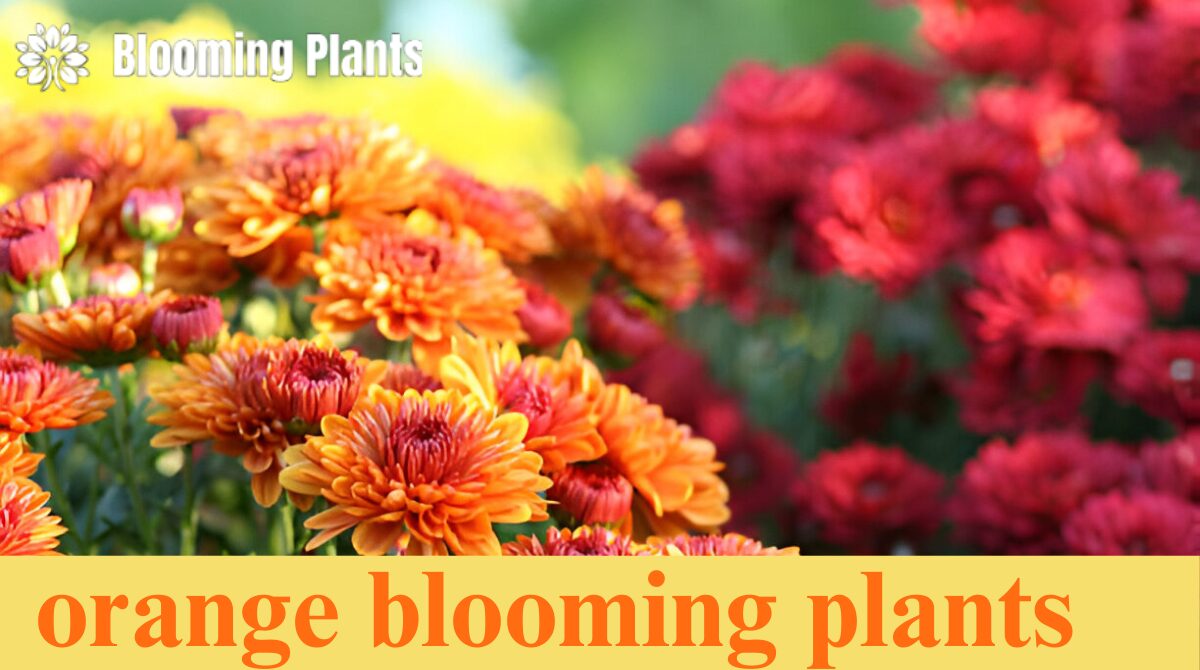The color orange is synonymous with warmth, energy, and creativity. When it comes to gardens, orange-blooming plants can transform ordinary spaces into vibrant havens that exude positivity and boldness. From tropical flowers to hardy perennials, these plants can suit a variety of climates and gardening styles. This comprehensive guide dives into the world of orange-blooming plants, providing detailed insights on species, care tips, design inspiration, and more.
Why Choose Orange Blooming Plants for Your Garden?
The Emotional Impact of Orange
- Energetic Ambiance: Orange flowers infuse energy and warmth into your garden.
- Symbolism: Often associated with enthusiasm, joy, and creativity, orange plants can create a welcoming atmosphere.
Practical Benefits
- Pollinator-Friendly: Many orange-blooming plants attract butterflies, bees, and hummingbirds.
- Seasonal Variety: From spring to fall, these plants provide continuous bursts of color.
Design Appeal
- Contrast and Harmony: Orange pairs beautifully with blues, purples, and greens in garden designs.
- Versatility: Suitable for borders, containers, and ground cover.
Top Orange Blooming Plants for Every Garden
Annuals
- Marigold (Tagetes spp.)
- Description: Vibrant orange hues with a signature, peppery scent.
- Growing Conditions: Full sun; well-drained soil.
- Care Tips: Deadhead regularly to encourage blooms.
- Zinnia (Zinnia elegans)
- Description: Dainty petals are available in a range of orange shades.
- Growing Conditions: Thrives in sunny spots with moderate watering.
- Unique Feature: Excellent for cutting gardens and floral arrangements.
Perennials
- Orange Daylily (Hemerocallis fulva)
- Description: Trumpet-shaped flowers that bloom for a single day but in succession.
- Growing Conditions: Adapts to various soils; needs full to partial sun.
- Special Note: Perfect for low-maintenance landscapes.
- Butterfly Weed (Asclepias tuberosa)
- Description: Clusters of bright orange flowers.
- Growing Conditions: Well-drained, sandy soil.
- Ecological Value: Supports monarch butterfly populations.
Shrubs and Bushes
- Mexican Flame Vine (Pseudogynoxys chenopodioides)
- Description: A climbing shrub with radiant orange daisy-like flowers.
- Growing Conditions: Prefers warm, sunny climates.
- Best Use: Perfect for fences, trellises, or pergolas.
- Orange Trumpet Creeper (Campsis radicans)
- Description: Vigorous climber with tubular, fiery orange blooms.
- Growing Conditions: Requires full sun and well-drained soil.
- Care Tips: Prune regularly to control growth.
Tropical Beauties
- Bird of Paradise (Strelitzia reginae)
- Description: Exotic blooms resembling a bird in flight.
- Growing Conditions: Partial to full sun; needs moist, rich soil.
- Noteworthy Tip: Ideal for container gardening in cooler climates.
- Canna Lily (Canna spp.)
- Description: Tall stalks with flamboyant orange blossoms.
- Growing Conditions: Requires moist soil and a sunny location.
- Interesting Fact: Rhizomes can be dug up and stored in colder zones.
Care Tips for Thriving Orange Blooming Plants
Soil Preparation
- Testing: Conduct soil pH tests to ensure compatibility.
- Amendments: Add compost or organic matter to enhance fertility.
Watering Needs
- Deep Watering: Most orange blooming plants prefer occasional, thorough watering.
- Drainage: Ensure pots and garden beds allow proper drainage.
Light Requirements
- Sunlight: A majority of these plants thrive in full sun (6-8 hours daily).
- Shade Tolerance: Some varieties, like certain lilies, tolerate partial shade.
Seasonal Maintenance
- Pruning: Regularly trim to promote healthy growth and prevent overcrowding.
- Mulching: Use mulch to retain soil moisture and suppress weeds.
Designing with Orange Blooming Plants
Creating Color Schemes
- Warm Palette: Pair with reds and yellows for fiery garden beds.
- Contrasting Colors: Combine with blues or purples for striking visual appeal.
- Neutral Backdrops: Use orange blooms against greenery or white flowers to make them pop.
Planting Layouts
| Plant Type | Best Position | Example |
| Tall Perennials | Back of borders | Canna Lily |
| Medium Shrubs | Middle layer | Butterfly Weed |
| Ground Cover | Edges or front of borders | Creeping Zinnia (Sanvitalia procumbens) |
Case Study: A Garden Transformation
Background
A suburban homeowner wanted to create a vibrant, pollinator-friendly garden. The goal was to use orange blooms as the focal point.
Implementation
- Plant Selection: Marigolds, butterfly weed, and trumpet creeper.
- Design Elements: Added a wooden trellis for the trumpet creeper and bordered pathways with marigolds.
- Result: Increased visits from butterflies and bees, with a lively, welcoming atmosphere.
Frequently Asked Questions (FAQs)
1. What are the easiest orange-blooming plants to grow?
Marigolds and zinnias are among the easiest to grow, requiring minimal care and thriving in most conditions.
2. Can orange flowering plants survive in partial shade?
Yes, plants like orange daylilies and canna lilies can tolerate partial shade, though full sun promotes better blooms.
3. Are orange flowers good for pollinators?
Absolutely! Many orange flowers, such as butterfly weed, attract butterflies, bees, and hummingbirds.
4. What are some drought-tolerant orange blooming plants?
Mexican flame vine and orange trumpet creeper are excellent drought-tolerant options.
5. Can I grow orange blooming plants indoors?
Yes, plants like birds of paradise thrive in large pots indoors with proper light and humidity.
6. How can I make orange blooms last longer?
Regularly deadhead spent flowers and use fertilizers suited to flowering plants.
7. Are there orange blooming plants for winter gardens?
Yes, winter pansies and calendulas can add orange hues to colder seasons.
8. Can I grow orange flowers from seeds?
Definitely! Marigolds and zinnias are particularly easy to grow from seeds.
9. How do I attract more pollinators with orange plants?
Plant varieties like butterfly weed and provide a water source nearby.
10. Are orange-blooming plants toxic to pets?
Some, like butterfly weed, can be toxic if ingested. Always check plant toxicity before planting.

